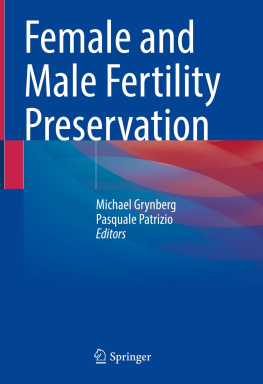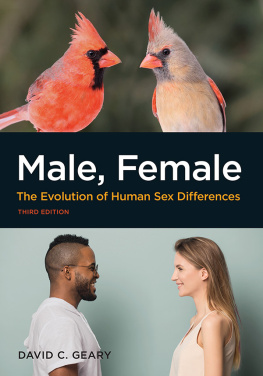Insights on Patricia Love & Steven Stosny's How to Improve Your Marriage Without Talking About It
Insights from Chapter 1
#1
Marlene and Marks story is common. They once enjoyed the closeness they felt with each other, but now that they are older, that feeling has gone away. It is easy for couples to slip into this pattern, because the different vulnerabilities that so greatly influence the way men and women interact with each other are virtually invisible.
#2
The differences between male and female vulnerabilities are biological and present from birth. Baby girls are more sensitive to isolation and lack of contact, which explains why they are more easily frightened and anxious.
#3
Male babies are more sensitive to arousal than female babies, and this helps them defend themselves against predators. However, this also means that they are more susceptible to discomfort caused by overstimulation.
#4
Hyperarousal is a male tendency to be constantly on guard against shame. When you're embarrassed, you want to crawl into a hole, and a child feeling shame wants to cover his face because he can't bear to look at you.
#5
Intimacy is riskier for little boys when they have consistently felt shame in conjunction with it. If you have a baby boy, you must understand that he likes eye contact, but you must be more patient with him and not start tickling him when he looks away from you.
#6
Men and women have different fears and shame triggers, but what drives them apart is how they manage these differences. If you manage them with criticism, defensiveness, withdrawal, or blame, your relationship will fail. If you manage them with the inspiration to improve, appreciate, connect, or protect, your relationship will flourish.
#7
The male fight-or-flight response is seen most commonly in acts of aggression and competitiveness. Men try to avoid shame by being aggressive, and women try to avoid shame by not being aggressive.
#8
The biological difference between the sexes is slight at birth, and does not produce the large difference in behaviors we see in adults. Most of that comes from culture and socialization, which, from early childhood, set out strict ways to avoid shame and fear based on gender.
#9
The sex difference in vulnerability to fear and shame is not unique to humans. It can be observed in most species of social animals. The females are more fearful, even when they are the primary hunters, and the males are more status oriented.
#10
Theories suggest that women are more loving, compassionate, and caring because they are more vulnerable to fear of harm, isolation, and deprivation. Men are more loving, compassionate, and caring because they are more vulnerable to feeling like failures as parents and lovers.
#11
The beginning of your relationship should be marked by mutual respect and admiration. He should be generous and good company, and she shouldnt dream of hurting his feelings or his body.
#12
Mark began to hear his wife Marlenes perfectly reasonable requests for more closeness as The way you love isnt good enough. This sent him into shame-avoidant behavior distraction, stonewalling, control, or criticism.
#13
When a woman stops exposing vulnerability to a man, she will start to feel resentment. This is because the emotional void in her life will be filled with resentment, and she will leave him thinking that they have grown apart.
#14
Fear and shame are not bad things. They are natural responses to danger, and can help us stay safe. They can also keep us moral, humane, and true to our deepest values.
#15
The fear-shame dynamic is what keeps a man in a relationship with a woman who constantly criticizes and berates him. The threat of fear or shame is so powerful that the limbic system, which controls your safety, overpowers any form of rational thinking.
#16
The fear-shame dynamic is powerful, but it is not the most important thing about you. Much deeper is the compassionate, loving part of you that was so active when you were a child and when you were first in love with each other.
#17
There is a lot more to what makes something reasonable than its degree of intellectual logic. A computer is logical, but how many important decisions would you want a computer to make. And would you want to marry a computer, even if it looked like Brad Pitt or Nicole Kidman.
#18
When Randy called Sheila irrational, he was actually trying to devalue her opinion, which he found threatening. He was trying to avoid his own shame and fear.
#19
There is no scientific evidence that one sex thinks better than the other. The real difference between men and women is that men try to ignore some of the information provided by their emotions, because there is so much cultural shame attached to men expressing emotions.
#20
The fear-shame dynamic that powers so many of our arguments forces us to make an artificial distinction between logic and emotion. The truth is that emotions are logical, and we need to integrate both sides of the brain to function as a whole person.
#21
Emotional attunement is the process by which we tune our emotions to those of people we love. It is why our choice of words has little impact on our relationships, regardless of how many communication classes we take.
#22
Emotional attunement is a process that takes place in relationships, and it can be negative because negative emotions are more geared towards survival. If you walk into a relationship in a good mood and your partner is in a bad mood, the attunement process will bring him up a little and take you down a lot.
#23
Power struggles happen when two people are trying to control each other or force the other to submit. They are about the reactivity of shame and fear, and the more reactive you are to fear or shame, the more disconnected you will feel from your partner.
#24
The surveys are not designed to label you or put you in a category. They simply provide an objective view of experiences that can influence your sensitivity to fear and shame.
#25
We all have a genetic hand of neurochemicals that helps us regulate our emotions. When your serotonin levels are normal, its easier to control your reactivity and hold a positive outlook. When your serotonin levels are low, however, you are more reactive and prone to fear and shame.
#26
Attunement is an unconscious process that happens automatically. You can, however, control your response to attunement, which will determine your level of happiness. Without conscious effort, attunement and its negative bias are unlikely to make you happy.
#27
Men have a hard time giving the reasons they value their wives, because their wives are the reason they value everything else. Women make it possible for their men to find enjoyment in watching sports, cooking, tinkering with the car, and hanging out with friends.
#28
The devastating effects of divorce on a man are indicative of the fact that his partner provides the meaning of his life. Divorce is more devastating for men than for women, because women maintain and nurture the familys social support structure after they leave their husbands.
#29
Men are typically ashamed of their relationships, because they feel inadequate about them. They feel powerless to make relationships work, and theyd be the first to admit it if their wives didnt beat them to it.
#30
The fact that it is easier to form a close connection with a girl means that men, in general, are more shocked and bewildered when their wives start making emotional demands on them after marriage.
#31
The books and programs designed for couples seem to imply that to have a strong relationship, you must learn to relate to your wife in the way that women typically relate to one another. This leaves men with two options: becoming like a woman or growing more emotionally isolated in marriage.






